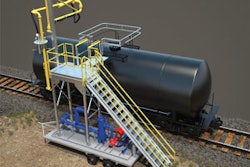WASHINGTON (AP) — U.S. consumers paid more last month for food and gas. But outside those volatile categories inflation was mild.
The consumer price index rose 0.3 percent in March, the Labor Department said Friday. That's slower than February's 0.4 percent rise.
Gas prices increased at a slower pace than the previous month. Excluding food and gas, so-called "core" prices increased 0.2 percent in March.
Inflation has eased since last fall and is expected to stay mild. In 12 months that ended in February, prices rose 2.7 percent. That's below last year's peak year-over-year rate of 3.9 percent.
Core prices have risen 2.3 percent in the 12 months that ended in February, close to the Federal Reserve's inflation target of 2 percent.
Mild price increases leave consumers with more money to spend, which boosts economic growth. Lower inflation also gives the Fed more leeway to keep interest rates low.
Food prices tick up last month but are moderating after sharp increases last year. Gas prices are high but are starting to level off. A gas averaged $3.91 per gallon nationwide on Thursday, three cents less than a week earlier.
And even though hiring has picked up, wages have barely kept pace with inflation. So many retailers can't charge more without losing some business.
A small amount of inflation can be good for the economy. It encourages businesses and consumers to spend and invest money sooner rather than later, before inflation erodes its value.
Fed chairman Ben Bernanke has acknowledged that rising gas prices have boosted inflation. But he has maintained that the increases are likely temporary.
Most economists expect the Fed won't announce any new policy initiatives at its April 24-25 meeting. Policymakers appear less inclined to take further steps to boost growth. Minutes from their March 13 meeting showed only a couple members expressed support for purchasing more bonds as a way to drive down long-term interest rates and promote more borrowing and spending.
A report Thursday indicated that inflation pressures aren't increasing much at the wholesale level. The producer price index, which measures price changes before they reach the consumer, was unchanged in March. Rising costs for food and pickup trucks were offset by a drop in wholesale gas prices.
In the past 12 months, wholesale prices rose 2.8 percent, the smallest year-over-year rise since June 2010. Excluding food and gas, core wholesale prices rose 0.3 percent and 2.9 percent in the past year.






















